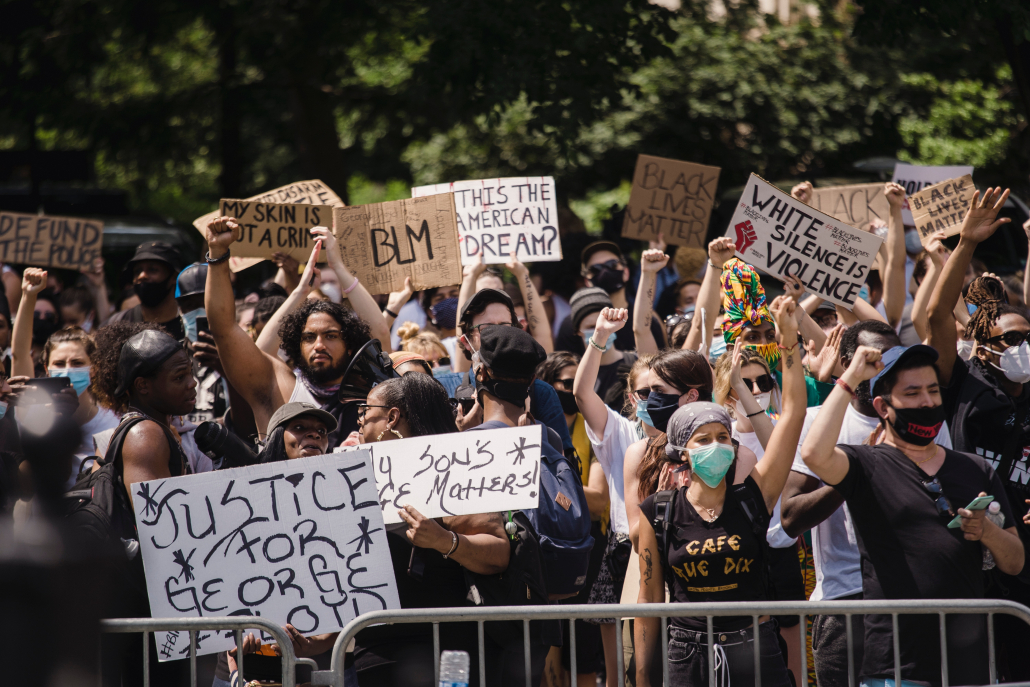Social justice is historically villainized by newsrooms

Throughout history, newspapers have villainized social justice movements. There was a time where papers were run by wealthy white men, thus it made sense that the stories in the paper would be against movements supporting women’s suffrage, immigration rights and labor unions. Even today there is a clear bias — both intentional and unintentional — towards social justice.
In regards to the history of news villainization, the women’s suffrage movement in the 19th century proved to be one of the most notable. Much of the coverage surrounding these women was negative and hostile, and the same can be said for the coverage surrounding Martin Luther King Jr. and the Civil Rights Movement in the ’60s. In the 21st century, it may be easy to think that this cycle of delegitimizing movements and issues has stopped, but that is not the case.
During the summer demonstrations of Black Lives Matter, the media coverage continued the cyclical norm of bad coverage. There was clear perpetuation of an elitist point of view, where some media outlets would opt to interview the people in power (senators, police officers, etc.) instead of the protesters on the ground. Media outlets also failed to frame BLM outside of the protests, since much of the coverage was on what happened on the streets rather than the overall message of the movement.
Additionally, the focus on the small groups of violence served as a catalyst for the criminalization and delegitimization of the entire movement. Violence tended to be incited by small groups or police and their blunt force during the peaceful demonstrations; however, most outlets equated all the violence and suggested that it was a result of BLM.
Not only do these practices delegitimize an important movement that is raising key issues, they continue a cycle of antagonization of movements that has been present throughout the history of journalism.
This cycle also goes beyond movement and tends to be common practice when covering social justice issues in general. For example, during the mass migration movements from East Europe in the 19th century, media outlets perpetuated anti-immigrant language in their papers that reinforced stereotypes of these groups. Today, a similar practice of language is used to report police shootings of Black citizens. Instead of calling it for what it is, many outlets opt to use nuanced phrases like “officer-involved shooting” to protect the group in power and continue to dismiss this social justice issue of police brutality.
Media outlets continue to create harmful narratives and delegitimize the message of social justice issues and mass movements. The first step in breaking this antiquated cycle is to recognize the harm done by journalists and recognize the problems in media practices in the past in order to point them out in coverage today. Only then will media outlets be able to produce accurate and ethical coverage.
Journalism history can be taught through a formal education, such as the curriculum at the USC Annenberg School for Communication and Journalism, or it could be self taught. This type of curriculum can mimic a course already taught at USC titled “Culture of Journalism: Past, Present and Future,” where the class began by looking at individual coverage of movements like women’s rights, immigration and labor union movements and analyzed how the media portrayed said groups.
In addition to this structure, the curriculum could include a more immersive look at the specific language media outlets have used in the past and measure their impact on things like social justice; identifying these problems and patterns in history and today is the key to stopping them.
It is also important to do this work at the school newspaper level. At the Daily Trojan, reporters should begin to pick out methods that antagonize social justice issues and movements and work to halt them, making it a norm for future journalists. This type of work can be done with the help of a diversity and inclusion department that leads training on media bias and journalism complicity in this villainization of social justice.
Learning about these issues via an educational process and practice in the realm of student publications is the key to ensuring this cycle of villainization stops.

